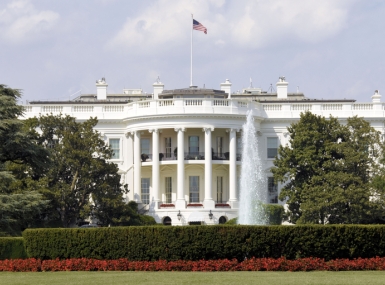Treasury releases new guidance on eligible uses and reporting requirements for Fiscal Recovery Fund
Author

Eryn Hurley
Upcoming Events
Related News

Key Takeaways
On June 8, the U.S. Treasury released an updated FAQ document that provide clarification on eligible expenses and reporting requirements for the Coronavirus State and Local Fiscal Recovery Fund (Recovery Fund). This fund, authorized under the American Rescue Plan Act, provided $65.1 billion in direct, flexible aid to every county in America, as well as other crucial investments in local communities. Many of the questions answered in the updated document were submitted by NACo on behalf of county governments.
Specifically, the FAQ document addresses the following key items:
- Costs of consultants: Recovery Funds CAN be used to cover the costs of consultants to assist with managing and administering the funds.
- Public jobs programs: Recovery Funds CAN be used to establish public jobs programs (I.e. subsidized employment, combined education an on-the-job training, job training to accelerate rehiring or address negative economic impacts, childcare assistance or assistance with transportation to and from a jobsite or interview).
- Revenue loss and audited financial data: If a county does not have audited data readily available when calculating its revenue loss, it is not required to obtain audited data.
- Revenue loss and Census data: When calculating general revenue, counties should use their own data sources and do NOT need to rely on published revenue data from the Census Bureau.
- Revenue loss on cash basis/accrual basis: When determining revenue loss, counties may provide data on a cash, accrual or modified accrual basis, so long as the county is consistent in their choice of methodology throughout the covered period and until reporting is no longer required.
- Flexibility for costs incurred by March 3, 2021: The FAQ document states that the IFR permits funds can be used to cover costs incurred beginning on March 3, 2021. However, this limitation applies to costs incurred by a county government receiving Recovery Funds. Therefore, counties can use Recovery Funds to provide assistance to households, businesses and individuals (within eligible categories) PRIOR TO March 3, 2021. For example:
- Public health/negative economic impact: Counties may use Recovery Funds to provide assistance to households, such as rent, mortgage or utility assistance, incurred by the household prior to March 3, 2021 (I.e. rental arrears from preceding months), provided that the cost of providing this assistance to households was NOT incurred by the county PRIOR TO March 3, 2021
- Premium pay: Counties may provide premium pay retrospectively for work performed at any time since the start of the COVID-19 public health emergency (I.e. January 27, 2020.
- Revenue loss: The calculation of lost revenue begins with the recipient’s revenue in the last full fiscal year prior to the COVID-19 public health emergency (I.e. January 27, 2020) and included the 12-month period ending December 31, 2020. Use of these revenue recoupment funds for government services MUST be forward looking for costs incurred by the recipient after March 3, 2021.
- Investments in water, sewer and broadband: Counties may use Recovery Funds toto cover costs incurred for eligible water, sewer and broadband projects planned or started prior to March 3, 2021, provided that the project costs covered by the Recovery Fund were incurred AFTER March 3, 2021.
- New CFDA number for the Recovery Fund: Treasury has updated the Recovery Fund’s CFDA number to 21.027 (it previously had the same number as the CARES Act Coronavirus Relief Fund – 21.019). If your county has already received funds or captured the initial CFDA number in your records, you should update your systems and reporting to reflect the final CFDA number for the Recovery Fund – 21.027. Counties must use the final CFDA number for all financial accounting, audits, subawards and associated program reporting requirements.
- Water and sewer project eligibility: Counties do not need approval from Treasury to determine whether an investment in water, sewer or broadband projects are eligible under the Recovery Fund. A county should make its own determination that a project meets the eligibility criteria outlined in the IFR. However, when determining which projects to invest in, counties should familiarize themselves with other federal or state laws or regulations that may apply to construction projects independent of the Recovery Fun’s funding condition and that may require pre-approval.
Although Treasury has stated the agency will release additional FAQs in the coming weeks, NACo strongly suggests counties submit comments for the record in response to Treasury’s Interim Final Rule on the Fiscal Recovery Fund to ensure the county voice is reflected in the public comments when it comes time to finalize the rule. The deadline to submit comments is July 16, 2021.
To read NACo’s FAQs on the Recovery Fund, click here.
To read NACo’s analysis of Treasury’s Interim Final Rule, click here.
Resource
Updated NACo Analysis: Overview of U.S. Treasury's Final Rule for ARPA Fiscal Recovery Fund

Related News

County Countdown – May 6, 2025
Every other week, NACo's County Countdown reviews top federal policy advocacy items with an eye towards counties and the intergovernmental partnership. This week features

White House releases FY 2026 Budget Request: Top Highlights to Counties
The President’s budget requests cutting non-defense discretionary funding by 23 percent, amounting to $163 billion, and proposes a 7.6 percent spending cut to discretionary spending.

NACo endorsed advanced refunding bills reintroduced in the 119th Congress
NACo endorsed these bills and supports counties’ ability to issue tax-exempt advance refunding bonds, which can save taxpayers millions of dollars.